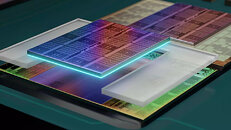
AMD Pensando Distributed Services Card to Support VMware vSphere 8
AMD announced that the AMD Pensando Distributed Services Card, powered by the industry's most advanced data processing unit (DPU)1, will be one of the first DPU solutions to support VMware vSphere 8 available from leading server vendors including Dell Technologies, HPE and Lenovo.
As data center applications grow in scale and sophistication, the resulting workloads increase the demand on infrastructure services as well as crucial CPU resources. VMware vSphere 8 aims to reimagine IT infrastructure as a composable architecture with a goal of offloading infrastructure workloads such as networking, storage, and security from the CPU by leveraging the new vSphere Distributed Services Engine, freeing up valuable CPU cycles to be used for business functions and revenue generating applications.
As data center applications grow in scale and sophistication, the resulting workloads increase the demand on infrastructure services as well as crucial CPU resources. VMware vSphere 8 aims to reimagine IT infrastructure as a composable architecture with a goal of offloading infrastructure workloads such as networking, storage, and security from the CPU by leveraging the new vSphere Distributed Services Engine, freeing up valuable CPU cycles to be used for business functions and revenue generating applications.





































